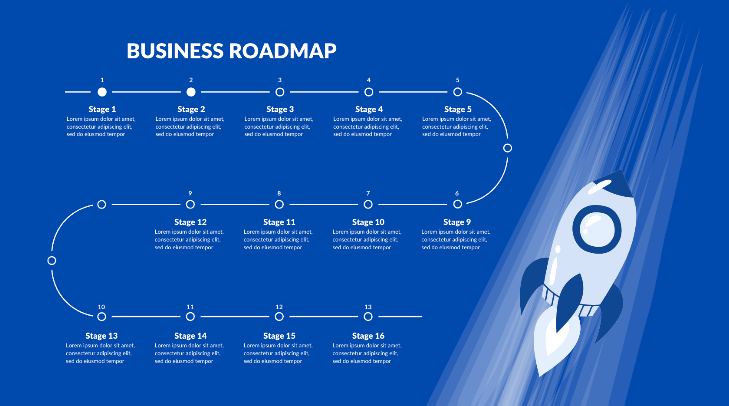This essay originally was published on September 28, 2023, with the email subject line "CT No. 186: Workflow and business optimizations for content pros."
Last December, I lost a steady client that brought in about 10 percent of my income. In February, another client went through restructuring. As a result, my point of contact got fired, and I lost another 40 percent of my income. Within two months, half my income was gone. While I did win some new clients in that period, the initial panic frightened me.
Once the things settled, I decided I never wanted to experience sudden financial precarity again. In my work as a content marketer, I spend hours advising clients on their content strategy and positioning, but I was too busy with client work to apply my skills to my own business. After my scare, I decided it was time to change that and my prioritize myself.
Climbing the freelancing ladder of success
At times, freelancing can feel like an unstructured activity. There isn't a clearly delineated career path or personal development plan that you can work out with your line manager. Likewise, and much to my chagrin, there's no such thing as a Chief Freelance Writer either (although that would be a cool title).
But through my network, I met other writers who presented much more tantalizing forms of success. For example, I know of peers who make six figures, yet work only 25-30 hours per week. I've met other content creators who have half a dozen income streams, so they're much more selective with the clients and projects they take on. Still others are very liberal with their time off without necessarily sacrificing their income or the quality of clients they work with.
When it comes to freelancing, progress comes in three forms:
- Streamlined business workflows that increase efficiency
- Iterative expertise that builds value over time
- High-quality work that attracts other lucrative and enjoyable projects
Here, I share my work from the first two buckets. Provided we do these two right, the quality work will naturally follow.
Streamlined business workflows
In psychology, Solomon's Paradox describes a phenomenon whereby individuals are much better at applying wisdom when solving other people's problems than their own.
This summer, I hired a business coach who specializes in freelance writing to help me develop a “game plan” to elevate my business. This plan has helped me in two ways:
- It gives me structure and helps me prioritize the things that would make the biggest difference today
- It keeps me accountable as now I have a third-party that checks on my progress
The first area I tackled here was my positioning and business workflows.
Templatize, templatize, templatize
Any business relies on a number of repetitive tasks to operate. If we don't optimize them, they can be a big time suck for our productivity. Here are a few that I've since templatized:
- Quote Template. Drafting work estimates from scratch is not only an unproductive use of your time, there's also a significant chance important information will be forgotten, lost, or misremembered. A quote template can also set expectations and function as an informal contract. I learned this lesson when a client came back with edits six months after I submitted the work, but because I hadn't specified anywhere in our contract that there's a time limit on revision requests, I couldn't argue. I've also been burnt with the number of revisions a client can request because I hadn't specified the limit at the outset.
Now, I use two Quote Templates. They're very similar, one comes with three engagement options while the other one comes with just one. (I'm going to share my quote templates and other best practices on scoping content projects at the How to Sell and Scope Content Projects workshop on October 19; if you're interested, you can register here.) - Qualification Form. Another time suck is jumping on calls with unqualified leads. I've been guilty of this when work has been slow, only to spend an hour talking to someone who couldn't afford even 50 percent of my fee. Not a productive use of my time.
My Qualification Form now sits on my homepage and I use it every time I engage with a prospect I don't know that well. This onboarding strategy also helps the prospects see how I work and the different services I offer.
Clients often seek help without a clear idea of what they need. Going through these questions can help them gain clarity and define their needs before they speak to me, expediting the conversion process and illuminating areas where my services match their needs. - Feedback Form. Gathering feedback isn't a must, but it's an efficient way to gather testimonials if you want to grow your business. I've found that clients who enjoy working with you won't mind sharing an anecdote about their experience.
However, writing a testimonial can be a bit intimidating. Clients aren't sure what to say or how long the testimonial should be. Frankly, some people just don't like writing, so they put it off. I've had situations where clients loved working with me and were happy to give me a recommendation, only if I wrote it myself. I wasn't really comfortable with that, so I created the Feedback Form which guides clients through the process. Once I have their responses, I edit them into a concise paragraph that still reflects their thoughts, opinions, and voice for them to review and approve.
Scale your business development
Many people cringe when they think of client outreach. The idea of sending unsolicited emails or LinkedIn messages that barely get any response isn’t really life-affirming. That said, the way we approach outreach is typically the reason why it's so unappealing.
Most freelancers do some form of outreach only when they really need the work. Their sporadic efforts frequently appear desperate because, well, they are — a mood killer for any prospective client. And even when freelancers do send an email or two, they give up when they don't get a response, often because they assume a non-response is equivalent to a harsh rejection as opposed to a casual pass.
In line with building business systems, I spent a good amount of time optimizing my business development so that it's consistent, efficient, and even enjoyable as well. While I worked on both inbound and outbound activities, below I share how I optimized the outbound strategy, often the hardest for independents to master.
Outbound client outreach strategy for freelancers
Any business should have an outbound business development strategy. Even if times are great and you're swimming in client work, you need to keep engaging with prospects in order to avoid the feast-and-famine cycle, but also to win bigger and better projects.
Since I've worked in sales before, I'm not shy about reaching out to people. I just wasn't organized in how I went about it. My business coach gave me a 21-day prospecting course that helped me get organized. Here's what I've changed since:
- Prospecting template. I built a Dream List of companies I'd like to work with. There, I track the main point of contact, their industry, employee size, email, and any touchpoints I've had with them. Employee size is important as I've come to realize that my ideal client profile is smaller companies with fewer than 100 employees.
- Email templates per niche. I defined the top three niches I want to go after and developed an email sequence for each. These emails are sufficiently personalized that with just a few tweaks I can send them to my prospects.
- Prospecting schedule. I now have prospecting booked into my calendar just like any other task. In order to make the whole thing easier, I've split my days into different themes. So, Monday is a research day, Wednesday and Thursday are outreach days, and Friday is a follow-up day (for the batch I emailed the previous week). Again, this adds repeatability to the whole process and helps me build a healthy habit in bite-size activities. I don't spend too much time on this each day, but it all adds up once you've been doing it for a few months.
Prospecting takes time to show results, so it's really important to adjust your expectations. Very few people are ready to buy when you first approach them and even then it takes many interactions before they trust you enough to engage with you. Keep that in mind when working on your own strategy.
Embrace iterative expertise
Alongside streamlining our workflows, we need to be intentional about infusing our growing expertise into our offers. In software, iterative development allows businesses to create applications that adapt to sudden shifts in requirements. In the context of freelancing, iterative expertise means reviewing anything new you've done or learned and incorporating that into your business moving forward.
This may sound self-evident, but in the past I'd been stuck delivering the same set of services without adjusting them based on the additional work I've done for clients. Unless you're intentional about reviewing your products and services, your business will stay in the same place it's been for years. I recommend conducting an internal audit at least once every six months and ideally after each major project.
When it comes to iterative expertise, I adhere to three main approaches:
- Building on past experience
- Identifying adjacent opportunities
- Responding to market shifts
Building on past experience
One of my ghostwriting clients asked me to build an executive topic matrix which, at a glance, can tell them what topics each of their c-suite members can refer to during media appearances. I've never done such a matrix before, but I welcomed the challenge. The client was delighted with the result, so rather than treating this as a one-off project, I now offer this as a service to prospective ghostwriting clients, too.
Identifying adjacent opportunities
As your experience grows, explore adjacent revenue streams you can open up just by thinking of all the other work your client needs to do around the product or service you deliver. For example, when a client asks me to write a white paper, I offer to develop a white paper promotion plan as an upsell. The business will need a landing page and promotional activities to launch their white paper, so I might as well offer to do this for them.
Responding to market shifts
The market can be a great driver for change. Just take a look at the impact ChatGPT had on the creative services. To remain savvy, stay current on what's happening in your industry and think about how these changes impact your work, but also the work of your clients.
Recently, some of my clients panicked when they saw their competitors scale their publishing model (coincidentally, this happened when ChatGPT came into the picture). As a result, they were tempted to go down the same route. In talking this through, we devised a much better plan that helped them differentiate themselves from the noise and it allowed me to create new products in my portfolio.
Today, I barely do free consultation calls. Instead, I have a “BrandBoost Discovery Call” package where I help customers identify key areas and topics to focus on. I no longer have email exchanges with spreadsheet attachments that give away my expertise for free. Instead, I offer subscription-based strategy consultancy (“Strategy as a Service”) where customers can get on a call with me to discuss ideas, content plans, and other strategic questions.
Saving the original intellectual work for paid client engagements not only makes your business AI-resistant, but it positions you as an expert and allows you to charge for something you were essentially doing for free.
Be of service to clients
Finally, let's not forget that regardless of how much we optimize, true success follows from a desire to be of service to others. When we stop talking about ourselves and start thinking about how we can help others, that’s when people start listening. That's when we start building genuine, fruitful relationships and start experiencing meaningful and sustainable growth as a result.
Natasha Serafimovska is a freelance writer with six years of industry experience in EdTech/SaaS, covering a number of tech verticals including emerging tech, unified comms, IoT and digital transformation. Natasha also works as an executive ghostwriter for Fortune 500 companies, and her work has been featured in TechCrunch, Entrepreneur, Newsweek, and more.
Hand-picked related content






